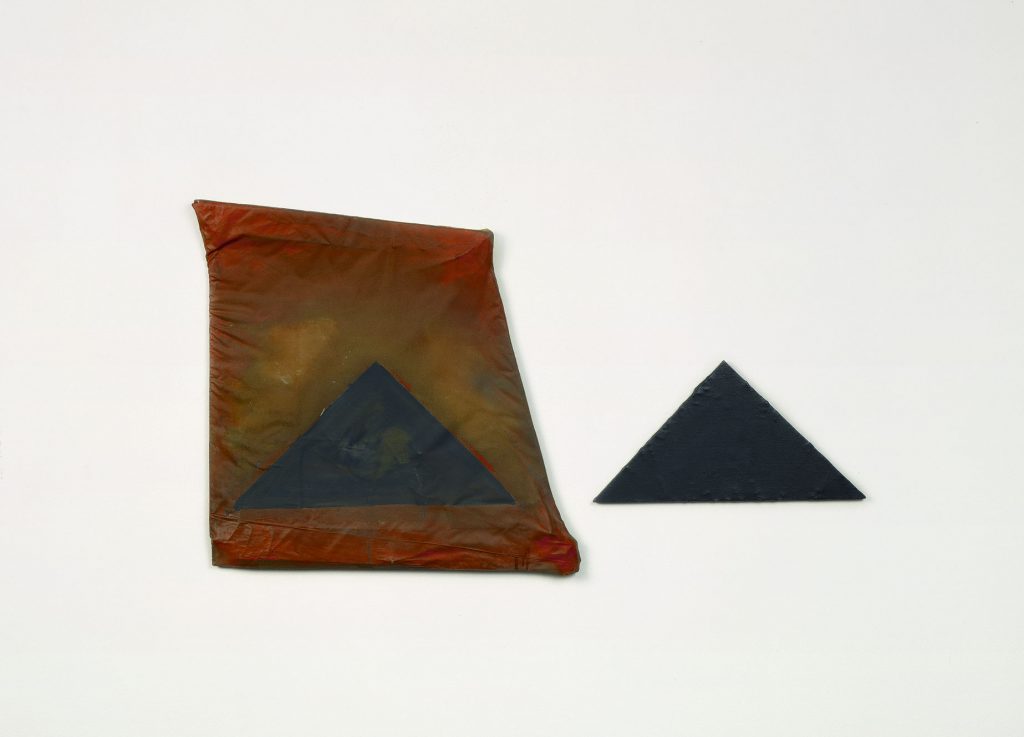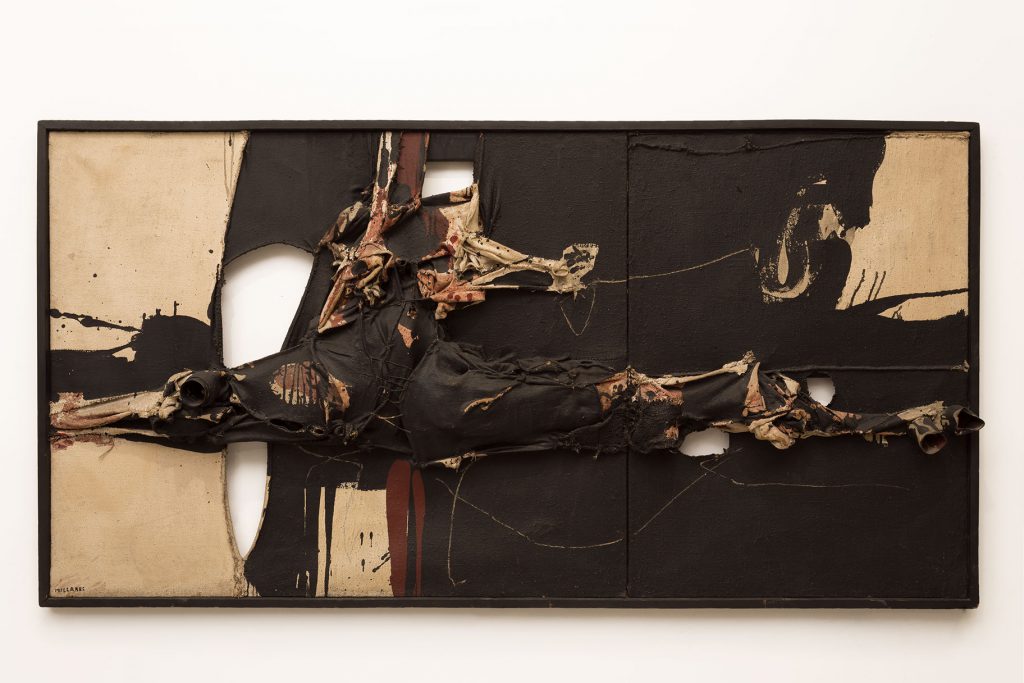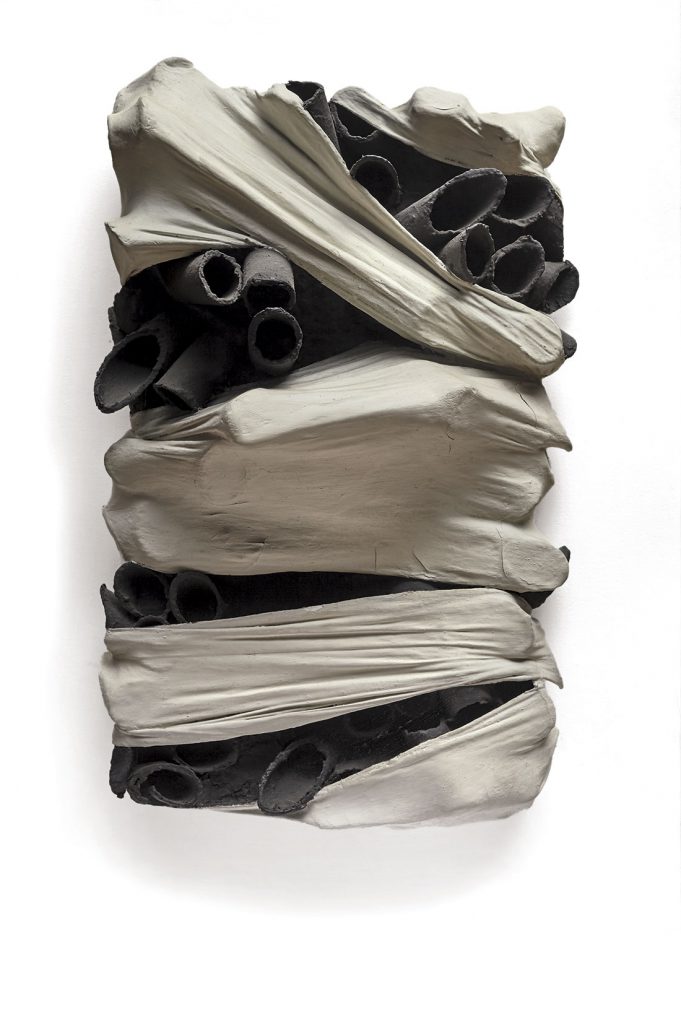DISTANT WORLDS
LATIN AMERICAN UTOPIAS IN POST-WAR EUROPE
From 1944 onwards, Concrete artists in Buenos Aires and Montevideo sought to move beyond European abstract art by ‘inventing’ a new kind of object that interacted more fluidly with the real world rather than just representing it. Paintings with cut-out frames – precursors to shaped canvases – introduced a new relationship with the space around the artwork while articulated sculptures added the dimensions of time and movement.
By the mid-1940s, Latin America was a territory of experimentation for the concrete artists of Buenos Aires, Montevideo, Sao Paulo, Rio de Janeiro and Caracas The utopian ideas of the concrete movement in Latin America, which were echoed by different trends in architecture and the Valparaíso School in Chile, all of which are featured in this exhibition – began to spread through local intellectual circles during the Second World War when Latin American artists found their traditional path to Europe blocked and spread to Europe in the post-war period.
In 1954, Ivan Serpa founded the Grupo Frente along with Lygia Clark, Hélio Oiticica, Lygia Pape and other artists who sought to bring about the gradual disintegration of painting in space so as to free up the line and colour and create a new visual order. In 1959, the group was re-founded as a neo-Concrete movement that sought to develop an art that transcended the space of the painting and incorporated the body and subjectivity.
Presenting a counterpoint to the Argentinian and Brazilian movements, these galleries feature works by the American and German artists Morris Louis and Blinky Palermo, who sought the liberation of colour and experimentation with the surface of the painting.
Artists featured: Paul Almásy, Carmelo Arden Quin, Jo Baer, Juan Andrés Bello y Carlos Raúl Villanueva, Martín Blaszko, Lúcio Costa, Geraldo de Barros, Augusto de Campos, Willys de Castro, Juan del Prete, Thomaz Farkas, Marcel Gautherot, Alfredo Hlito, Gyula Kosice, Morris Louis, Raúl Lozza, Tomás Maldonado, Juan Melé, Oscar Niemeyer, Hélio Oiticica, Blinky Palermo, Lygia Pape, Lidy Prati, Albert Georg Riethausen, Rhod Rothfuss, Grete Stern, Amancio Williams, Yente (Eugenia Crenovich)
STRATEGIES OF DESTRUCTION IN EUROPE AND LATIN AMERICA
In the 1960s, the destruction of art, both as representation and the actual act, was explored by artists from across the world. It was a way of addressing the extreme violence of the decade – as exemplified by the threat of the atomic bomb, the war in Vietnam and Latin American dictatorships, among others – but also a means of emphasizing the value of art as a liberating, creative force. The Italo-Argentinian artist Lucio Fontana anticipated these approaches in 1949 with work that explored the dichotomy between the violent gesture that breaks with traditional forms of modernist representation and that which creates a new artistic dimension.
Artists featured: Francis Bacon, John Chamberlain, Exposición Arte Destructivo (Enrique Barilari, Kenneth Kemble, Jorge López Anaya, Jorge Roiger, Antonio Seguí, Silvia Torras y Luis Wells), Alberto Heredia, On Kawara, Kenneth Kemble, Manolo Millares, Marta Minujín, Luis Felipe Noé, Aldo Paparella, Emilio Renart, Rubén Santantonín
A BRIDGE BETWEEN TWO WORLDS
LUCIO FONTANA BEGINS THE DEBATE BETWEEN LATIN AMERICA AND EUROPE
The revolutionary ideas put forward by the Concrete Movement in the 40s in Argentina led to heated debate. The Argentine-born artist Lucio Fontana spent the first years of his career in Europe before returning to Argentina in 1940. Between 1940 and 1947 he came into contact with the rioplatense Concrete artists.
Within a month of his return to Europe in 1947, Fontana published his Primo manifesto dello spazialismo (First Manifesto of Spatialism) while his legendary buchi [holes] and tagli [slashes] moved beyond traditional brushstrokes to explore fundamental concepts such as the role of the artist as a visible and conceptual part of his work, the dichotomy between destruction and the opening of new dimensions and the tension between the space of representation and real space.
Artists featured: Lucio Fontana, Kenneth Kemble, David Lamelas, Fred Sandback
This exhibition is suppported by







